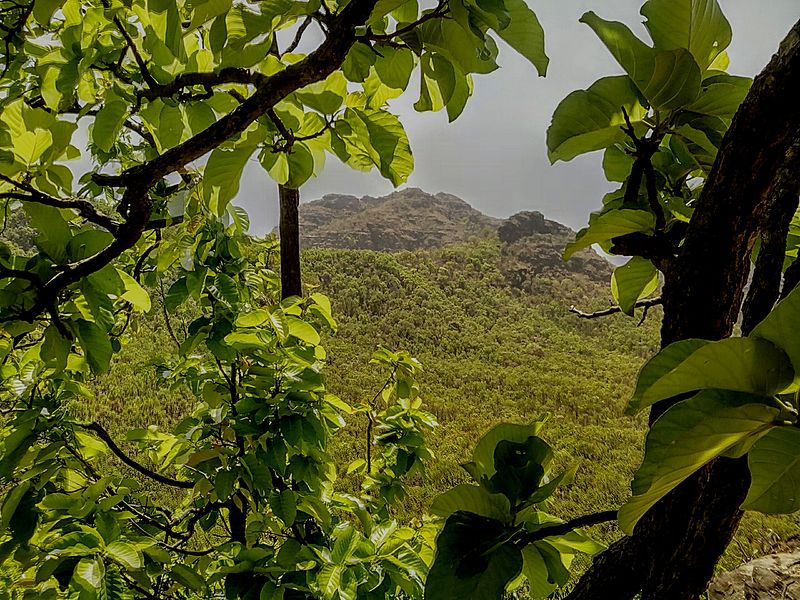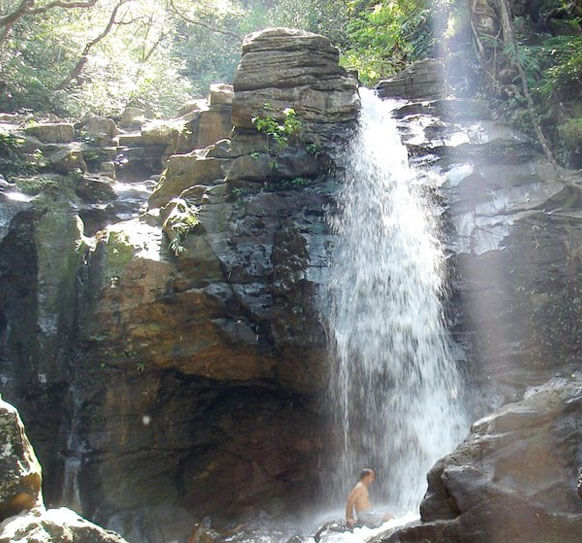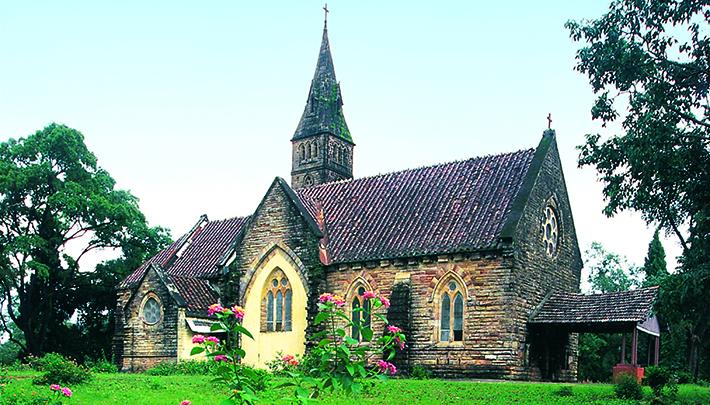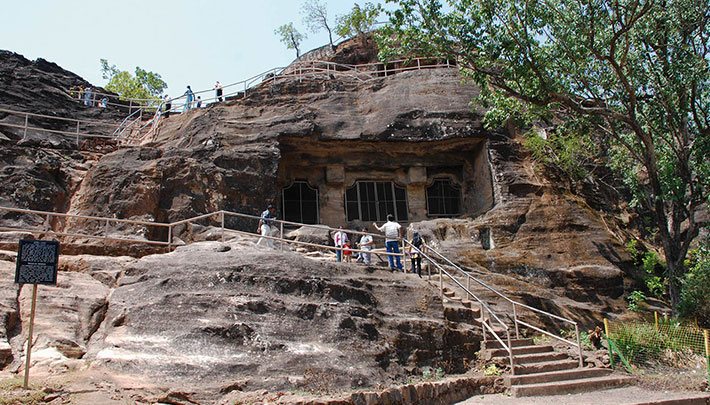Pachmarhi – Places to visit
Situated at 1100 m above sea level, Pachmarhi, popularly known as ‘Satpura ki Rani’ (Queen of Satpura), sits beautifully, embellished by nature and history, amidst the Satpura range in Madhya Pradesh. This most popular hill station is a treasure of astonishing richness of rock paintings in the Mahadeo Hills. Most of these paintings are in the period between 500-800 A.D., but some of them trace back to as early as 10,000 years old. This quiet town of Pachmarhi has a Strong presence of the Army whose Education Corps is headquartered here.
HISTORY OF PACHMARHI
According to the Mahabharata, the Pandavas were forced into exile on losing everything in a game of dice with the Kauravas. The Pandavas were to spend 14 years in anonymity as a part of their exile and agreeing to these terms, the Pandavas set out. While passing through Pachmarhi during their thirteenth year, they excavated these caves (‘Panch’ meaning Five in Hindi, and ‘marhi’ meaning caves) in the sandstone hills for their shelter. The caves are situated on a hilltop and provide an excellent vantage point.
PACHMARHI- PLACES TO VISIT
Following are places we recommend on your visit to Pachmarhi.
1. Priyadarshini Point (Forsyth Point): Priyadarshini Point is the spot that gives a view of the entire Pachmarhi valley. In the year 1857 Captain Forsyth discovered Pachmarhi from this spot. It was formerly called the Forsyth point. The British developed Pachmarhi as a hill station and resort after this discovery. Their influence is embodied in its curches and colonical architecture and present development of Pachmarhi. In the postcolonial period it got renamed as the Priyadarshini Point. One can get a beautiful view of the entire Pachmarhi valley and especially Handi Khoh ravine from here. Priyadarshini Point is the apt place to see the sunset in the majestic Satpura Range.

2. Jamuna Prapat (Bee Falls): The Bee Falls is a beautiful waterfall in Pachmarhi. It is also called the Jamuna Prapat which also provides drinking water for the Pachmarhi Valley. The Bee Falls is an enchanting cascade which flows with a beautiful buzzing sound. There is a pool below and another one above the waterfall. The bathing pools above the falls are very popular. If you are adventurous, you can cross the stream and reach the other bathing pool Rajat Prapat through the Bee Falls.

3. Handi Khoh: Handi got the name as it has the shape of the pot. The people of Pachmarhi used to call it Andhi Kho and later on it came to be known as Handi Khoh. Handi Khoh is a canyon or ravine inside the Pachmarhi forest region. It falls from a height of 300 ft and has rugged rock or cliff around it. As per folklore there was a lake in the place called Handi Khoh earlier. But a poisonous evil serpent, which was in fact a demon, was guarding the lake. Once there was a fight between the Hindu God, Lord Shiva and the evil snake. In the fury of the war between them the lake dried and the canyon was formed. Handi Khoh, lonely, yet a lovely place one can listen to the noise of bees and gushing waters.

4. Apsara Vihar (Fairy Pool): Easily accessible from the Jai Stambh, Apsara Vihar is a small waterfall with a shallow pool below it. It is also known as the Fairy Pool (Apsara meaning Fairy) which is an ideal place for safe swimming and picnics with families. The pool is shallow only deepening towards the base of the waterfall. This pool is located near the Pandava Caves. The story behind its name is a fascinating one. During the British regime the wives of British officers used to come here to bathe. The locals would peep through the bushes to see them. Seeing the fair skinned ladies they thought that they were celestial women or Apsaras who had descended from the heavens to take a bath.

5. Rajat Prapat (Big Fall): Rajat Prapat is known as Queen of Satpura. It is situated at a walkable distance of 10 minute over rocks & boulders from Apsara Vihar to the top of Rajat Prapat, the ‘Big Fall.’ The waterfall got its name Rajat Prapat as it shines in silver colour while sunlight falls on the water. Rajat Prapat literally means “Silver Fall” because ‘Rajat’ means silver and ‘Prapat’ means waterfall in Hindi. The Rajat Prapat is the largest waterfall of Pachmarhi. It is a single fall of 107 m and has the shape of a horse tail. It is the 30th highest waterfall of India.

6. Irene Pool: This pool was discovered by Irene Bose, wife of Justice Vivian Bose and named after her. The route upstream leads to a cave theorugh which the stream flows underground and then forms a waterfall. The fall creates a small beautiful pool by the name, Irene Pool.

7. Jalawataran (Duchess Falls): One of the magnificent sights to behold in Pachmarhi is Duchess Falls, also known as Jalawataran, which lies in the lap of the Satpura Range. Although Pachmarhi is dotted with numerous waterfalls, the Dutchess Waterfall holds a unique distinction of being one of the most challenging and adventurous waterfalls to reach. The water from this waterfall plunges into three different cascades and though the descent is steep and trek is strenuous for almost 3-4km, you reach the base of the falls’ first cascade which promises to be very rewarding.

8. Sunder Kund (Saunder’s Pool): Crossing the stream below Duchess Fall and following a footpath about 2.5 km in a south- west direction, brings one to a huge rocky pool that is excellent for a refreshing swim.

9. Mahadeo Hills, Bada Mahadeo Cave: The temple at Mahadeo cave is located at the base of the Mahadeo Hill, as a distance of 12 km from Pachmarhi town. It is a Shrine of Lord Mahadeva or Shiva. It is a 60 ft long cave and has shrines of Lord Brahma, Lord Vishnu and also of Lord Ganesha inside it.As per local beliefs, the Bada Mahadev Cave is the place where Lord Vishnu killed Demon Bhasmasura taking the form of Mohini, a celestial beauty. It has water dropping from the cave continuously and it gets collected in a pool which has curative properties. About half a km west of Mahadeo cave is a natural fissure in the rock, that is worshipped by the locals called Gupt Mahadeo or Chhota Mahadeo.
Chhota Mahadeo: Revered as a sacred spot, this is a narrow point in the valley with rocks overhanging a stream and a spring from which water cascades down.


10. Chauragarh Peak & Chauragarh Temple: The Chauragarh Peak is situated at an altitude of 1330 m. It is one of the highest points in Pachmarhi and gives a wonderful view of the dense Pachmarhi reserve forest, streams, waterfalls and the valley below. There is a famous Lord Shiva temple on the Chauragarh Peak making it an important pilgrim centre. The trek to the Chauragarh temple comprises of 1380 steps. On the day of Mahashiva Ratri Festival, hundreds of devotees climb the peak and reach the temple to worship Lord Shiva. Devotees used to bring a small Trident (Trishul) as a token of respect for Lord Shiva. Hence, the temple courtyard is filled with thousands of tridents offered by the devotees. The temple is a half built modern structure with an idol of Lord Shiva in the sanctum.

11. Jata Shankar Cave: The Jata Shankar Cave is a natural cavern of Pachmarhi and is an important place of worship for the believers in Shaivite tradition. There is a large Shiva Linga statue inside the cave which is naturally formed. As per myth, it is the place where Shiva hid from Bhasmasura. It also has a natural rock formation which resembles the hundred headed snake called Sheshang of Hindu Mythology. The rocks of this cave look like the matted hair of Lord Shiva. Hence, the name Jata Shankar Caves that comes from a particular shape of the rocks as ‘Jata’ means hair and ‘Shankar’ is another name of Lord Shiva. The Jambu Dwip stream originates from the Jata Sankar Caves.

12. Catholic Church: This Church was built in 1892 by the British and is a blend of French & Irish architecture. The old world aesthetics, Belgium- stained glass windows, Neo-gothic altar and a distant ceiling define the charm of the church. The Church has a cemetery attached to it and graves date from 1859, during the World Wars I and II.

13. Christ Church: The Christ Church is a church at Pachmarhi built by the British in the year 1875 and is considered one of the most beautiful small churches of Madhya Pradesh. The architectural style of this church is a mix of European styles with elements of Irish, French and British architectural styles in it. Its ‘Sanctum- santorum’ has a hemispherical dome on the top with its ribs ending with faces of angels. The stained- glass panes adorning the walls and the rear of the altar were imported from Europe and present a gorgeous view as the sun rays pass through them. The bell is as old as the church and its chimes can be heard from a far away distance.

14. Dhoopgarh: Dhupgarh or Dhoopgarh is the highest point or peak in the Satpura Range of an altitude of 1350 m. It is not only the highest point of Pachmarhi but also the highest point of Madhya Pradesh and Central India with a magnificient view of the surrounding ranges. It is an amazing experience to see the sunset at Pachmarhi.

15. Pandava Caves: The Pandava Caves are a group of five caves in a small hillock in Pachmarhi. Pachmarhi derives its’ name from these caves which, as per legend, the Pandavas during their period of exile took shelter in these caves. The Pandava Caves are beautifully carved natural caves. The one which is comparatively bigger with enough air circulation is called Draupathi Kuti or Cave. The most congested and dark cave is called Bhima Kothari or Cave.

16. Tridhara or Piccadilly Circus: Tridhara or Piccadilly Circus is one where you can see the meeting of two waterfalls here. Planning a picnic around it on holiday is a great idea for those looking for some good time amidst nature.

17. Vanashree Vihar (Pansy Pool): Pansy Pool is located on the Denwa brook in Pachmarhi and is quiet a place to visit in the hill station. The area is arrayed with trees that offer shade and a beautiful view to savour.

18. Reechhgarh: Reechhgarh is situated 6 kms away from Pachmarhi and is a natural cavern that has opening at both its ends. One has to scramble up a boulder to enter the cave and to exit from it other end and need to sneak through narrow canyons to be able to reach this wonderful natural amphitheatre of rocks. Visiting this place is an adventure in itself and it does make it to one of the top places to visit near Pachmarhi.

19. Sangam (Fuller’s Khud- Waters Meet): Sangam, also known as Fuller’s Khud, Waters meet is the point on the Denwa brook, where pools of water adorn a small area.

20. Satpura National Park: Setup in 1981, Satpura National Park is 524 sq km in area which spreads through dense forest of evergreen sal, teak and bamboo. It is also home to bison, bear, leopard, tiger, four-horned deer, blue-bull and a rich variety of birds. The high peaks of Dhoopgarh and Mahadeo, Bori’s legendary teak and bamboo forests, Pachmarhi’s fascinating natural beauty of deep valleys, high mountains, waterfalls, reservoirs, combines to give this Park a stunning beauty and breathtaking variety of attractions.

21. Bison Lodge: Constructed in 1862 and reckoned to be one of the oldest houses of Pachmarhi it is currently museum which depicts the rich flora and fauna of Pachmarhi.

22. Cave Shelters: Some of the best cave shelters and groups of shelters around Pachmarhi are:
Astachal (Monte Rosa): There are four shelters with paintings, comparatively early linear drawings. Along the northern side of Jambu Dwip valley are some six shelters with many paintings of animals and human figures, including a detailed battle scene.
Harper’s Cave: This cave shows the picture of a man playing the musical instrument Harp; hence, it got the name. It is a small cave which is situated near the Jata Shankar Cave.
Chieftain’s Cave: The Chieftain’s Cave derives its name from a battle scene showing two chieftains on horses.
Bharat Neer ( Dorothy Deep): The Bharat Neer is one of the best Shelter Caves of Pachmarhi. The Archaeological Survey of India had carried out excavations here in 1930. During the survey, they could collect many pottery shards from the Microlithic Period. The cave has artistically done fine paintings of animals inside it which gives us a sense about the bygone era.
Dhuandhar Cave: A steep trail from the Apsara Kund goes down into a massive rock shelter, adorned with hundreds of paintings. This cave houses striking images of daily life of people who lived here in the past.


There are also numerous activities to do like Rock Climbing near the Jata Shankar and Chauragarh Hills. Also the undulating topography of Pachmarhi offers an appealing ground for cycling as well. Riding a bicycle and exploring the Satpura Range is not only a refreshing change from the usual mode of transport like cars, buses etc, but also an eco-friendly and healthy option. Bicycles are readily available for rent from the Madhya Pradesh Tourism site.
Check our calendar to know the schedule for the next Go Heritage Runs. Also subscribe to our newsletter to get this information right to your inbox.
Until the next time, Find RunCations near you using the Madhya Pradesh RunCation App- M.P. RunCation App

